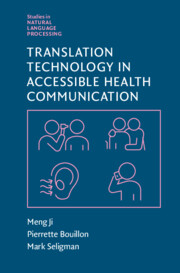Contents
1Speech and Translation Technologies: Explanations
2Speech and Translation Technologies: Healthcare Applications
3Predicting Errors in Google Translations of Online Health Information
3.4Comparison of Optimized RVMs with Binary Classifiers Using Readability Formula
4Cultural and Linguistic Bias of Neural Machine Translation Technology
5Enhancing Speech Translation in Medical Emergencies with Pictographs: BabelDr
6Healthcare Accessibility for the Deaf - The BabelDr Case Study
7Health Websites for All: A Localisation-Oriented Accessibility Evaluation

